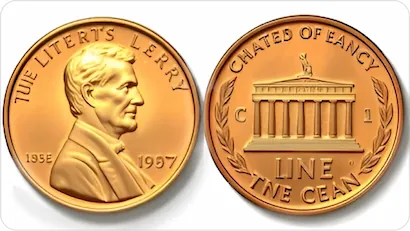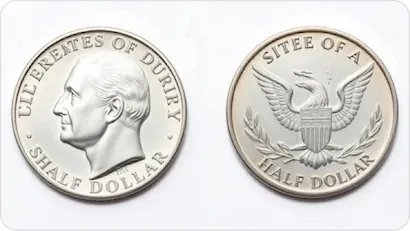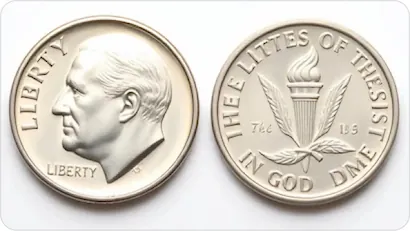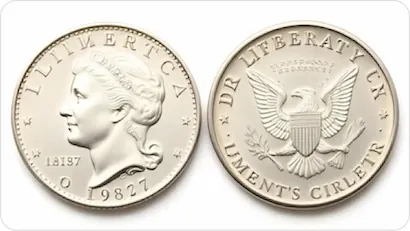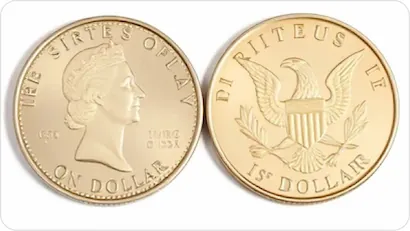Quarters to Grade, Grades to Explore
Quarters represent one of the most valuable and collectible coins in the US numismatic history, which is why grading them correctly is vital. Have you started your collection? Are you planning to delve into coin grading in the end?
In fact, grading state quarters is not as complicated as it might be seen at first, though it requires thorough preparation and a complete understanding of grading quarters standards, too. Shall we start?
A Quarter Means Diversity
One of the most iconic currencies in the US is the quarter, whose design has changed dramatically throughout time. Since its introduction in 1796, the quarter has undergone multiple redesigns each reflecting newly emerging national values, important historical events, and creative expression of the era.
A quarter has a history of technological innovations in addition to its diverse styles scattered throughout the time. The coin's content has changed, ranging from the silver quarters of the past to the clad quarters that were first produced in the 1960s. This is exactly why grades do vary, and understanding them is essential.
Grading Washington Quarters and the Rest
| Image | features | description |
|---|---|---|
| Mint State (MS) | Refers to uncirculated quarters that show no signs of wear damage or yellowing, original shine, and sharp details. Typical for modern quarters. | |
| About Uncirculated (AU) | Slight wear on the highest points, the original shine. Minor friction on the eagle's feathers, Liberty's gown, Washington's face, or other elaborate reverse patterns. | |
| Extremely Fine (EF/XF) | Details are still crisp and distinct despite light wear on the highest points. Liberty's shield, hat, or other important design elements ought to be clear yet a little endured. | |
| Very Fine (VF) | Key details are apparent but exhibit flattening; moderate wear on high points. | |
| Fine (F) | Finer decorations are mostly faded, although you can see outlines of Liberty, shields, or eagles, Washington's profile, state-specific locations, etc. | |
| Very Good (VG) | Some major design details are faint but still recognizable. The rest is gone, though essential elements like Liberty's figure, Washington's portrait, and/or the eagle's shape are still there. | |
| Good (G) | Severe wear; the interior features are almost completely gone, and only the design's outline is left. Though greatly flattened, basic forms of significant features remain discernible. | |
| About Good (AG) | Extremely worn; only faint shapes of the pattern remain visible. Hardly recognizable designs that are primarily prized for their historical relevance rather than quality and financial advantages. |
Types of Quarters and Their Grading Considerations
Capped Bust Quarters (1815-1838):
When grading Capped Bust Quarters, it is vital to pay particular attention to the eagle's wings (located on the reverse side) and the wear along Liberty's hair and cap (depicted on its obverse).

Seated Liberty Quarters (1838-1891):
The most worn-out spots on these coins that represent Liberty sitting on a rock are the shield and gown. Important grading Seated Liberty Quarters criteria are the overall clarity of small details and the feathers of the reverse eagle, too.
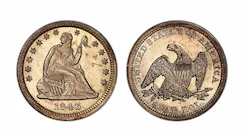
Barber Quarters (1892-1916):
What should we look for when grading Barber Quarters? High points that are usually prone to wear are Liberty's hair, the laurel wreath, and the tips of the eagle's wings spotted on the reverse. Coins with few surface blemishes and fine details are graded higher, which is obvious.

Standing Liberty Quarters (1916-1930):
The quarter that features an eagle in flight on the reverse and Lady Liberty standing with an olive branch and shield on the obverse usually exhibit wear on Liberty's head and shield, as well as on the eagle's wings. When grading Standing Liberty quarters, pay attention to these details in particular.

Washington Quarters (1932-1998):
These vintage quarters with a profile of George Washington on the obverse are assessed according to wear and design precision, particularly on prominent points like the eagle's wings and Washington's hair.
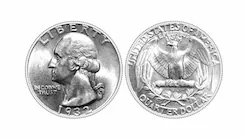
State Quarters (1999-2008):
Focusing on the detailed state-specific information on the reverse side is mandatory since it is more likely to get worn out and scratched over time. Higher grades depend on the original brilliance, too.
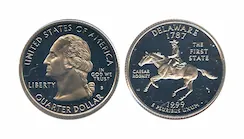
America the Beautiful Quarters (2010-2021):
The images of historic locations or national parks positioned on the reverse are always subject to deterioration. Nevertheless, strong strikes and few flaws make coins extremely valuable.
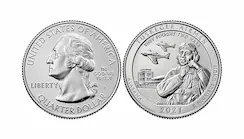
Clad Quarters (1965-Present):
Made of a copper-nickel composition, these coins suffer from wear like any other coin, so emphasize surface conservation, luster, and design detail clarity. These form the grade in the end.
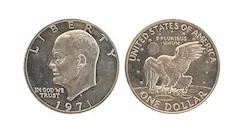
The Mint State Coin - An Ideal Example
The best coin condition is represented by the Mint State. Basically, such a coin should bear no indications of wear or damage but exceptional details and no dents or scratches as if the coin was not introduced in circulation. The grades of Mint State coins range from MS-60 to MS-70, where MS-70 is considered flawless and, hence, perfect. Preserving the coin's original clarity and luster, along with its distinct features, is essential to earning this grade for sure.
Why Professional Quarters Grading Matters
Professional grading offers confidence that each coin is authentic and worth its price. Before pursuing expert certification, it is simpler to comprehend a coin's grading potential and immediately identify its type and attributes with the use of tools like Coin ID Scanner..
By the Way… Coin Grading by US Coin Type
Your collection experience is to be the best, and Coin ID Scanner is here to help you with it.
